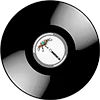
Acid — a style built on the legendary TB-303 sound, born in Chicago. All about acid music: history, tracks, artists, and the new wave of Acid Techno.
The acid wave is once again rolling over the electronic scene: the legendary Acid is returning to clubs, festivals and the top of playlists. Born from Chicago DJs experimenting with the Roland TB-303 synthesizer, the genre is now experiencing a new renaissance — from underground raves to performances by global headliners. Its trademark “liquid” sound is back in fashion, and the cult elements of Acid are finding their way both to young producers and to those who seek real rawness, boldness and protest in music.
The birth of the style is usually attributed to the mid-1980s, when Chicago DJs began experimenting with the Roland TB-303 synthesizer. Originally designed to imitate a bass guitar, this machine, when “misused”, started producing strange sounds: liquid, slippery, aggressively filtered — as if “acid were flowing through the wires”.
The first to popularize this sound were Phuture with their cult track “Acid Tracks” (1987), which gave the genre its name. They were followed by artists such as DJ Pierre, Armando, Hardfloor, Josh Wink, A Guy Called Gerald, and the style quickly spread across Europe.
Key traits of the Acid sound
-
The TB-303 sound — choppy, liquid, aggressive, with an evolving resonant filter
-
Loops built from very few notes, often on just 1–2 chords
-
An intense 4/4 rhythm, borrowed from house and techno
-
Trance-like repetition that creates a hypnotic effect
Modern trends
Acid never truly disappeared — it’s simply back in the spotlight.
-
Artists like Nina Kraviz, I Hate Models, Amelie Lens regularly weave Acid into their sets
-
Subgenres are resurging: acid techno, acid trance, acid core, neo-acid
-
A new generation is using VST plugins (such as ABL3, Phoscyon) to emulate the 303
Fun facts
-
The Roland TB-303 was considered a commercial failure when it was released — until DJs discovered it
-
At the height of Acid’s popularity, original 303 units were selling for thousands of dollars
-
Acid parties in the 90s were held in tunnels, warehouses and secret open-air locations
-
Acid became the soundtrack of the rave movement in the UK
Recommended tracks
-
Phuture – Acid Tracks
-
Hardfloor – Acperience 1
-
Josh Wink – Higher State of Consciousness
-
Nina Kraviz – I Want You
-
ASYS – Acid Nightmare*
Conclusion
Acid is more than just a style — it’s a sonic symbol of musical rebellion and freedom. It proves that a “mistake” in technology (like the 303) can give birth to an entire culture. If you haven’t yet dived into those acid pulses, now is the time. Feel the acid not with your eyes, but with your ears.

